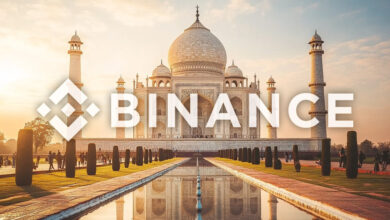Tokenized Deposits as Alternative to Stablecoins Favored by South Korean Banks in Preparation for CBDCs

South Korean banks are favoring Certificate of Deposit (CD) tokens as potential alternatives to “volatile” stablecoins, as reported by the South Korean news organization Pulse on July 24.
According to Pulse, industry sources revealed that Hana Bank plans to research CD tokens as part of the bank’s preparations for a potential Central Bank Digital Currency (CBDC) project led by the Bank of Korea.
Woori Bank has also expressed interest in CD tokens, as evidenced by a recent report issued by its research body.
South Korean crypto regulation
This development comes when South Korea’s financial regulators are strategizing the final aspects of new rules for the country’s cryptocurrency industry.
As previously reported by Cryptoslate, the impending legislation will focus on regulating crypto-asset issuance, tackling conflicts of interest, and establishing a robust framework to supervise stablecoins.
Following the passage of the Virtual Asset User Protection Act earlier this year, which introduced protective measures for investors, The Financial Services Commission (FSC) is contemplating broadening the Act’s scope to include crypto asset management firms after the recent suspension of withdrawals by two investment platforms, Delio and Haru Investments, due to their interconnectedness.
CD Tokens
According to Pulse, CD tokens, which turn bank deposits into tokens using blockchain technology, could replace payments currently settled with funds directly from bank accounts. This interest in CD tokens was notably piqued following the collapse of Silicon Valley Bank (SVB) in March of this year.
In contrast to stablecoins, CD tokens are based on existing banking systems and offer more reliability, with transactions settled using CBDCs issued by central banks.
Pulse also highlighted one of the critical features of CD tokens, the requirement for identity verification, due to being issued based on bank deposits. For legacy financial institutions, this may offer an advantage over stablecoins, which can become untraceable once issued, presenting potential regulatory oversight and fraud prevention issues.
Stablecoins in APAC
This South Korean banking sector development aligns with broader global digital currency adoption and stability trends. For instance, Circle, the provider of the USDC stablecoin, recently articulated its interest in targeting the 74% of Asia Pacific (APAC) trade invoicing conducted in US dollars.
Circle views the digital dollar, specifically USDC, as having the potential to significantly impact the APAC financial landscape, given the dollar’s dominance in the region’s financial transactions over the past two decades.
Circle’s CEO, Jeremy Allaire, highlighted the potential of USDC in the APAC region, stating that it’s clear,
“USDC takes the strength of the dollar and gives it the powers of the internet, enabling it to move as quickly and easily as a text message.”
Circle aims to revolutionize cross-border payments, reduce remittance costs dramatically, and facilitate traceable humanitarian aid.
As the FSC prepares for a second phase of regulatory assessment, the emergence of CD tokens and Circle’s expansion plan could ignite a battle between CDs and stablecoins for digital asset market share.
Banks’ trepidation toward decentralized digital assets and preference for traceable tokens underpins the global expectation that CBDCs are coming and will allow governments or central banks even greater access to citizens’ financial history.





